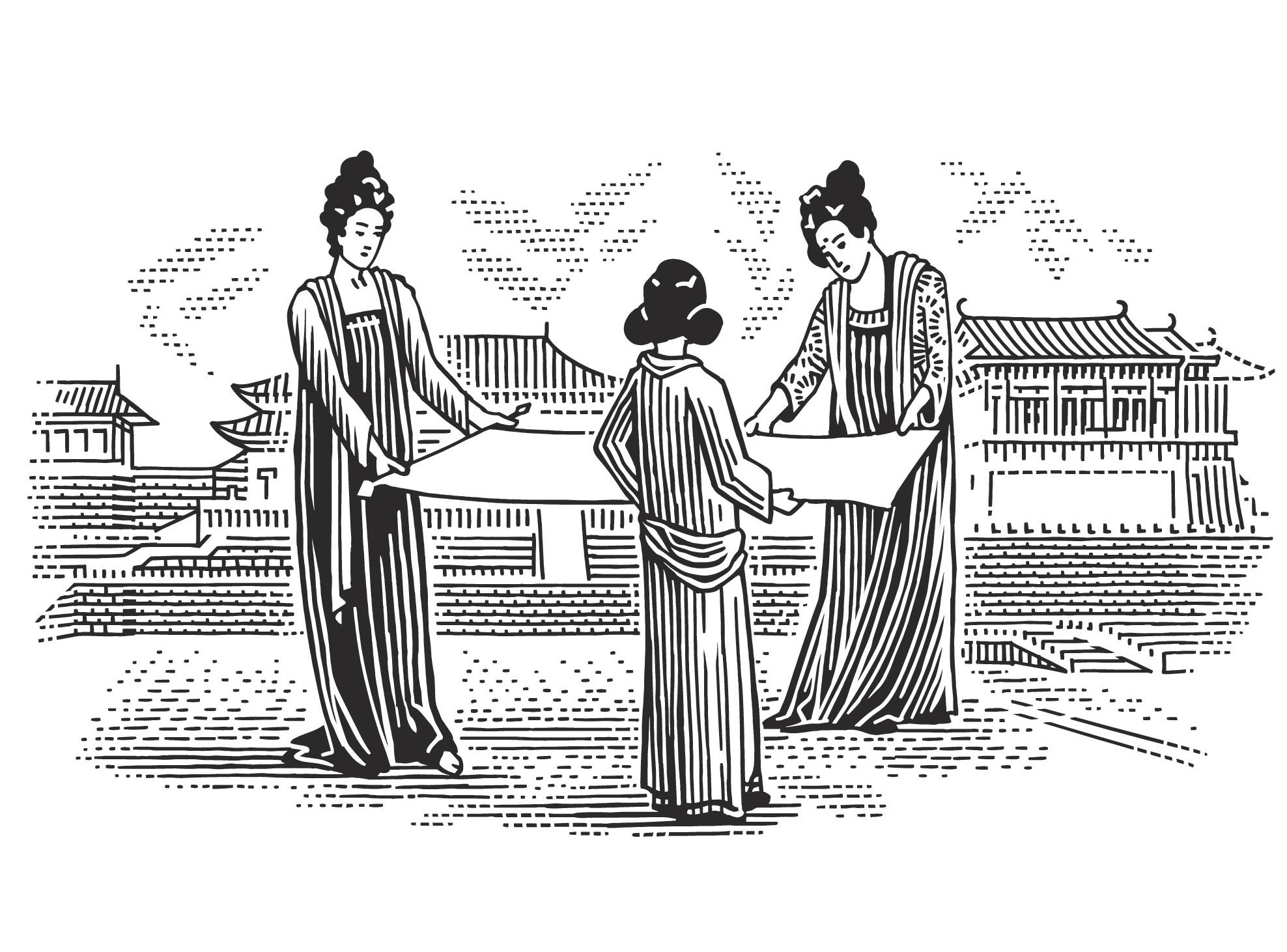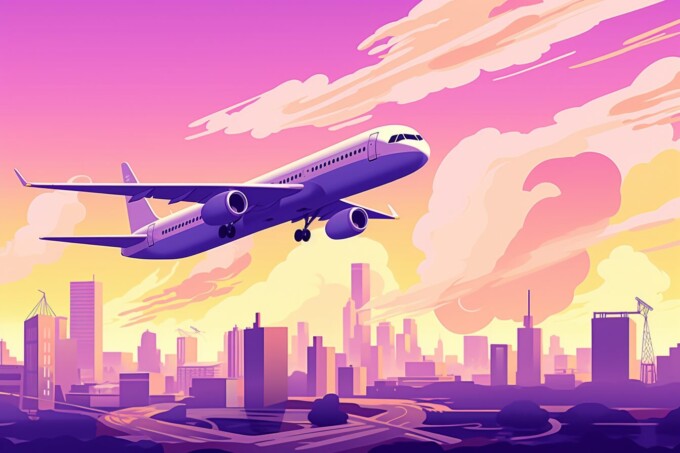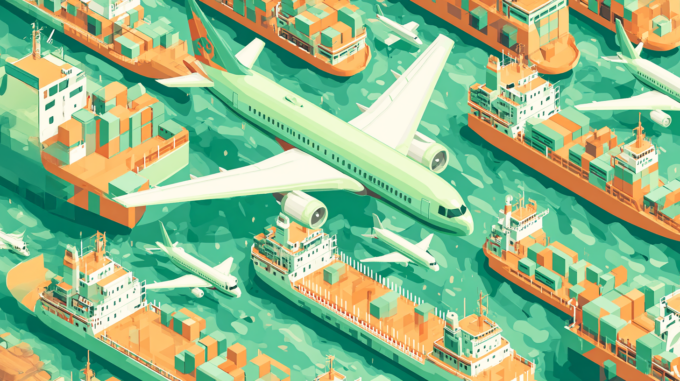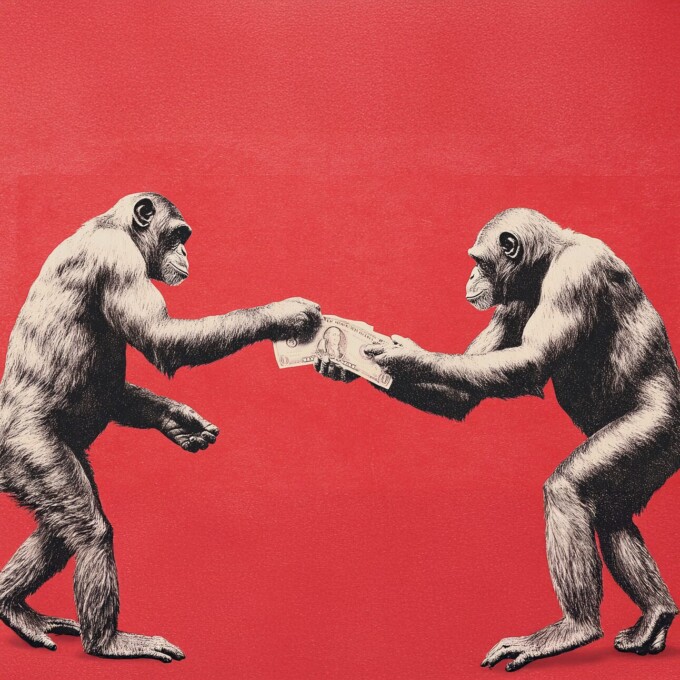Today marks the tenth installment in a series of articles by HumanProgress.org called Centers of Progress. Where does progress happen? The story of civilization is in many ways the story of the city. It is the city that has helped to create and define the modern world. This bi-weekly column will give a short overview of urban centers that were the sites of pivotal advances in culture, economics, politics, technology, etc.
Our tenth Center of Progress is Tang dynasty-era Chang’an, the easternmost stop along the Silk Road, once the world’s longest trade route. Many historians regard the Tang dynasty (618 to 907 AD) as a high point in Chinese civilization—a golden age of cosmopolitan culture. The Tang dynasty’s capital Chang’an was among the most prosperous and populous cities in the world, with over a million inhabitants by the end of the dynasty. While many places featured as Centers of Progress owed their prosperity at least in part to robust trade, perhaps no city in the ancient world better epitomized the enriching effects of trade than Chang’an.
The Silk Road linked many civilizations, such as the Roman Empire and the Chinese Empire. Great caravans of merchants traveling along the Silk Road carried out early trade in fabrics like silk and wool, precious metals like gold and silver, and other goods. The Silk Road stretched 4,000 miles, and took international trade and cultural exchange to new heights, connecting the East and West. It was on the Silk Road that East and West exchanged not only goods but also ideas. As such, the Silk Road was also the world’s preeminent long-distance communication network.
Chang’an stood in the central area of the present-day city of Xi’an (“Western Peace”). Xi’an is the capital of Shaanxi Province in northwest China. With over 12 million people, Xi’an is the most populous city in Northwest China and has been called an emerging Chinese megacity or megalopolis. The urban center remains famous for being one of the oldest cities in China and the Silk Road’s so-called starting point. It is also the home of the famed “Terracotta Army,” a collection of thousands of statues of soldiers buried with China’s first emperor to guard him in the afterlife.
Chang’an, meaning “Perpetual Peace,” was an ancient capital of more than ten dynasties in Chinese history. Its name is appropriate, given its significant role in international trade history because peace is a requirement for two countries to engage in trade—the nonviolent exchange of goods. The first emperor of China had his mausoleum, brimming with terracotta soldiers, built between 246 to 208 BC, slightly to the east of where Chang’an would appear. The traditional date given for Chang’an’s founding is 202 BC, at the start of the Han dynasty, when that dynasty’s founding emperor chose to place his capital there. He had a palace built in Chang’an that was then the largest palace ever constructed on Earth, spanning 1,200 acres. It was fittingly named Weiyang Palace (“Endless Palace”), and it survived until late in the Tang dynasty.
A complex network of trade routes emanating from Chang’an and extending to the heartland of Central Asia first began to emerge between the 2nd century BC and 1st century AD. The Silk Road peaked between 500 and 800 AD, enabling large-scale, long-distance trade of valuable goods. The great caravan tract followed the Great Wall of China’s path to the northwest, bypassed the Taklamakan Desert, crossed the Pamir mountains in Tajikistan, traversed Afghanistan, and continued to the Levant where merchandise traveled by ship across the Mediterranean Sea. Very few merchants made the journey across the entire Silk Road. Instead, goods were passed along in a staggered progression, with most merchants acting as middlemen who only traveled along a Silk Road subsection. The Silk Road takes its name from one of the most prized goods sold along its route.
Each spring, the city of Chang’an held an imperial ceremony of silk production. The women of the court prepared fine silk, stretching, and ironing the newly-woven fabric to perfection. There exists a famous painting of Tang dynasty-era court women preparing silk during the ceremony. (One can view a replica of that painting dating to the later Song Dynasty in the Boston Museum of Fine Arts). While Chang’an was famous for its silk exports, the Silk Road was a conduit of far more than silk. Chinese exports also included paper, rice wine, perfumes, camphor, and medicinal drugs. But imports are what made life in Chang’an so vibrant.
If you could visit Chang’an in the heyday of the Silk Road, you would enter a flourishing cosmopolis featuring the best of many different cultures and enveloped in a festival-like atmosphere. In Chang’an’s streets, parades of performers acted out plays from Sogdiana, an ancient Iranian civilization, before cheering crowds. The streets featured all manner of traveling performances, including magic shows from as far away as Rome. Dancers from many locales, including a renowned troupe from Tashkent in today’s Uzbekistan, performed in Chang’an’s boisterous taverns.
Amid the city’s elaborate architecture, you would have seen beautiful temples and the soaring Dayan Pagoda (still standing) that housed a Buddhist library featuring Indian scriptures. The teeming marketplace (now a museum) overflowed with novel goods brought by caravans of foreign merchants, including carpets from Persia, ivory from Thailand, spices from India, and Roman glassware. Around the city, you would have encountered diverse peoples and heard many different languages.
Enriched by trade, Chang’an flourished and became the site of a series of beautiful palaces built by the emperor to showcase his empire’s prosperity. The emperor’s court was known for its many hundreds of dancers, and the court also maintained at least nine different musical ensembles. Each ensemble specialized in a different musical style stemming from various lands. The musicians used imported instruments such as cymbals from India and lacquered drums from Kucha—an ancient Buddhist kingdom along the Silk Road. According to the Encyclopaedia Britannica, “one can sense in Tang musical culture an internationalism not matched until the mid-20th century, when radios and phonographs provided their owners with the delights of a similarly diverse and extensive range of choices.”
Not everyone appreciated the fruits of cultural exchange. The 8th-century poet and government official Yuan Zhen, who considered non-Chinese persons to be “barbarians,” lamented the presence of foreign people and practices in China. He complained of alleged air pollution created by foreigners, decried Chinese women who wore imported makeup, and complained of entertainers who devoted themselves to foreign musical styles. While he wrote those words in connection to his home city of Luoyang, the effects of cultural exchange would have been even more pronounced in Chang’an:
“Ever since … the Western barbarians kicked up smoke and dust, the rank stink of fleece, felt, and mutton has pervaded Luoyang. Our women have become barbarians’ wives and learned to apply their makeup, while singing girls offer barbarian tunes and focus on barbarian music.” (Note that to Yuan Zhen, “Western” meant anything beyond the Great Wall).
Not only did the Silk Road enrich Chang’an’s artistic scene, but it also introduced many new ideas to the city. Various philosophies and religions came to China along the Silk Road, notably Buddhism from India. The people of Chang’an also became familiar with Nestorian Christianity from Syria, Zoroastrianism and Manichaeism from Persia, Judaism, and Islam spread by Arab merchants. Muslims built the city’s Great Mosque in 742 AD. For a time, diversity of thought blossomed, and the city was known for its tolerance of religious and philosophical differences.
However, as the Tang dynasty began to decline, xenophobia and religious intolerance grew. Moreover, as Chang’an grew wealthier, unfortunately, it became a target for military attacks, and the city became unstable. The city was captured by rebel forces led by a general named An Lushan, in 756 AD, but was retaken by the Tang dynasty the next year. In 763 AD, invaders from the Tibetan Empire briefly occupied Chang’an, and an alliance of the Tibetan Empire and the Uyghur Khaganate again besieged the city in 765 AD. Tensions gave rise to two notable massacres of Silk Road merchants, led by anti-Tang rebel army leaders—Tian Shengong and Huang Chao, respectively. The first was the Yangzhou massacre (760 AD), followed by the Guangzhou massacre (878–879 AD). Both massacres involved the slaughter of over a hundred thousand Arab and Persian merchants. Among the victims were Muslims, Jews, Christians, and Zoroastrians.
A series of rebellions, including the one led by Huang Chao mentioned above, ultimately proved devastating to the Tang dynasty. Huang Chao sacked Chang’an in 881 AD. Although Tang forces were eventually able to suppress that rebellion and reclaim the city, the dynasty never fully recovered and was soon ousted. Further political instability in other areas of the world caused by the loss of several Roman territories in Asia and the rise of Arab power in the Levant made the Silk Road increasingly unsafe. Hence trade along the route declined precipitously.
However, in the 13th and 14th centuries, the Mongol Empire brought the Silk Road back into common use. It was then that the writer and merchant Marco Polo made his famous journey from Venice to China. The Silk Road embodied not only the potential of trade to improve lives and create prosperity, but also the challenges that come with global interconnectivity, such as the potential for cultural clashes and the spread of contagious illnesses. In the mid-14th century, the Silk Road helped to spread the bacteria responsible for the Black Death pandemic from Asia to Europe.
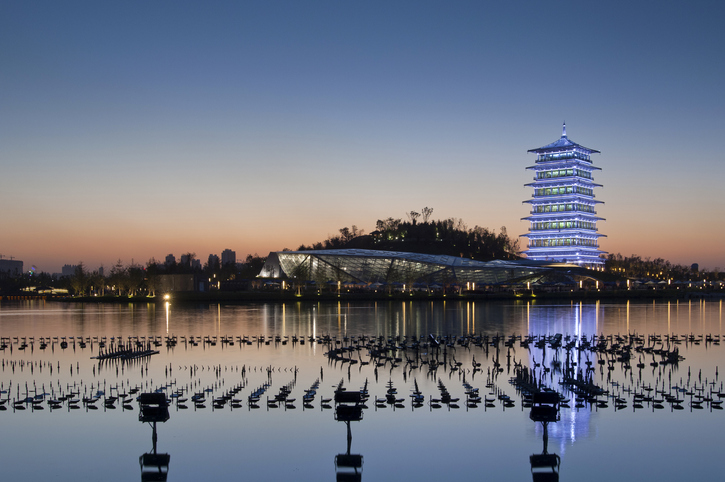
Perhaps no city was more emblematic of the Silk Road than Chang’an. The city is often called the “starting point” of the Silk Road. That is because of its status as the easternmost stop along that trade route and as the origin point of much of that route’s namesake silk. Trade brought Chang’an extraordinary cultural and economic wealth and made it among the world’s most dazzling and cosmopolitan cities in its day. For its vital connection to the Silk Road, which greatly expanded the international exchange of goods and ideas, Tang dynasty-era Chang’an is deservedly our tenth Center of Progress. Today, global trade and cultural exchange have risen to heights that the Silk Road merchants could not have imagined. While challenges such as pandemics remain a part of globalization, trade and exchange continue to enrich our lives immeasurably.

